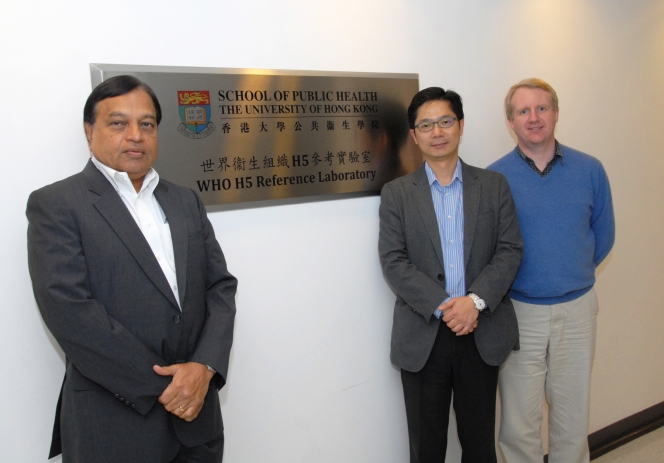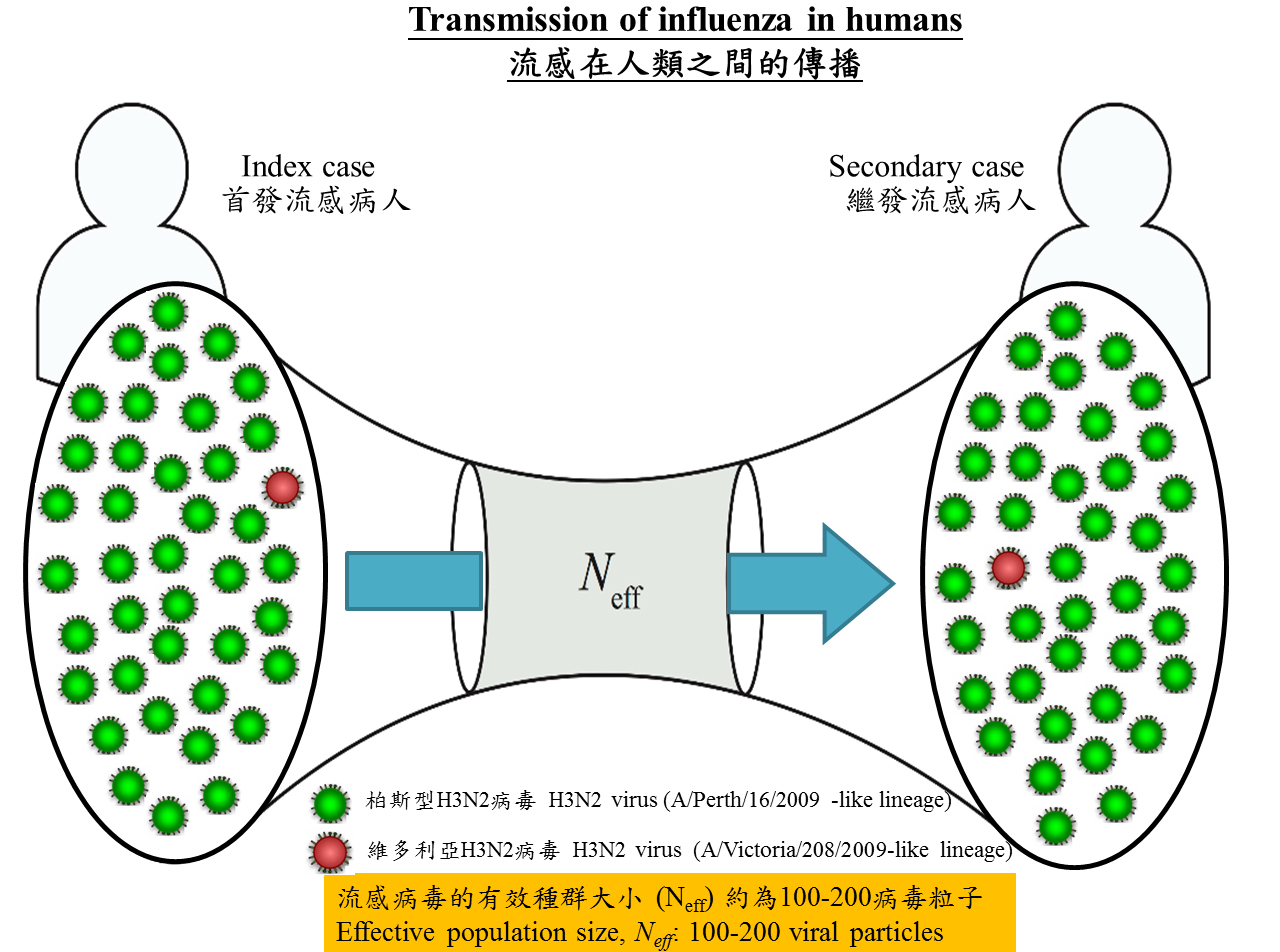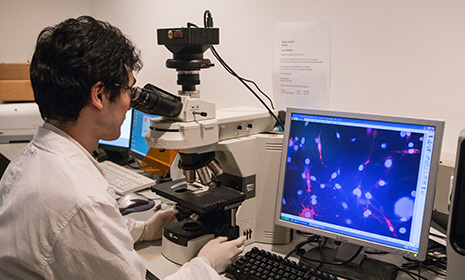HKU and international research teams quantified influenza virus diversity and transmission in humans
*adapted from the contents published by the Communications and Public Affairs Office of the University at http://www.hku.hk/press/news_detail_13818.html
An international research team, led by Dr Leo Poon Lit-man, Associate Professor of the School of Public Health, Li Ka Shing Faculty of Medicine, The University of Hong Kong (HKU) and Professor Elodie Ghedin, Professor in the College of Global Public Health, New York University, USA, have applied deep sequencing technology to compare influenza intra-host variation between patients in a transmission chain. They estimate the effective population size of influenza A virus across donor/recipient pairs to be approximately 100 to 200 viral particles, which enabled the transmission of multiple lineages including antigenic variants. These results further demonstrate that multiple virus strains of the same subtype are readily co-transmitted between persons. The research has brought an important breakthrough in understanding the transmission mechanism of influenza and it has been published today in the prestigious international scientific journal, Nature Genetics.
Research Implications
Dr Leo Poon, Associate Professor of School of Public Health, Li Ka Shing Faculty of Medicine, HKU, says, “Our high-throughput sequencing study revealed the presence of minor single nucleotide polymorphisms (SNPs, nucleotide variations at specific positions in a nucleic acid sequence) which are below the detection limit of traditional dideoxy sequencing method. In addition, a majority of these SNPs are found to be shared by index and secondary cases within the same household, indicating that viruses with these minor SNPs are also transmissible upon infections. This enables researchers to accurately predict influenza models and conduct researches on effective measures in controlling influenza transmissions. ”
Using these minor SNPs as markers, the team was able to estimate, for the first time, the effective viral population size for influenza virus transmission in human, which is the number of virions transmitted from the index patient that are able to replicate the secondary case. The team often found that viruses with these minor variants are antigenically and genetically distinct from the dominant strains, indicating that there are frequent co-transmissions of antigenic variants of the same subtype between humans.
Professor Benjamin Cowling, Professor of School of Public Health, Li Ka Shing Faculty of Medicine, HKU says, “Characterising the genetic information of transmitted virions via high-throughput sequencing technology allows a better understanding of influenza virus transmission in humans, and the evolution of new strains of influenza virus.”
Research method and findings
Respiratory samples were collected from households with confirmed influenza transmission from July to August 2009. Serial samples from 84 individuals (67 index patients and 17 other household members) were subjected to high throughput sequencing analyses. The intra-host virus diversity of each sample was measured by mapping polymorphic sites onto the consensus genome assemblies to generate a list of single nucleotide variants. By comparing the sequence diversity between index and secondary cases within the same household, the effective population size of influenza A virus was estimated to be about 100 to 200 viral particles. The sequencing results also revealed co-transmissions of different antigenic variants of the same subtype between individuals. In addition, this in-depth analysis allowed reconstructing potential transmission pathways of influenza outbreaks in a community.
Background of research
Human influenza virus is genetically diverse. Its genome keeps on evolving over time. However, our understanding on its sequence evolution primarily comes from consensus sequences generated from routine surveillances. As this sequence information only represents the dominant virus found in infected patients, not much is known about the extent of intra-host virus sequence diversity and the viral sequence diversity transmitted among human individuals.
About the research team
This research was led by Dr Leo Poon Lit-man, Associate Professor in the School of Public Health, Li Ka Shing Faculty of Medicine, HKU, and Professor Elodie Ghedin, Professor in the College of Global Public Health, New York University, USA. Major team members from Li Ka Shing Faculty of Medicine, HKU in this study include Professor Malik Peiris, Tam Wah-Ching Professor in Medical Science, Chair Professor of Virology and Director of School of Public Health, Professor Yi Guan, Daniel CK Yu Professor in Virology, Professor of School of Public Health, and Professor Benjamin Cowling, Professor in School of Public Health. The study was done in collaboration with colleagues from University of Pittsburgh, J. Craig Venter Institute, Icahn School of Medicine at Mount Sinai, Carnegie Mellon University and The University of Sydney.
Please visit the website at http://www.med.hku.hk/v1/news-and-events/press-releases/ for press photos.

Key researchers of the research, (from left) Professor Malik Peiris, Tam Wah-Ching Professor in Medical Science, Chair Professor of Virology and Director of School of Public Health, Dr Leo Poon, Associate Professor of School of Public Health, and Professor Benjamin Cowling, Professor of School of Public Health, Li Ka Shing Faculty of Medicine, HKU.

Dr Leo Poon (Left on the back row), Associate Professor of School of Public Health, Li Ka Shing Faculty of Medicine, HKU, says the study enables researchers to accurately predict influenza models and conduct researches on effective measures in controlling influenza transmissions.

The research team estimates the effective population size of influenza A virus across donor/recipient pairs to be approximately 100-200 viral particles.








.png)
